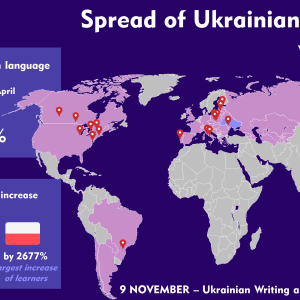Ukraine’s decisive resistance since the beginning of the full-scale invasion of the Russian Federation has not only subjective factors, which are based on the own interpretations of individual experts but also quite a number of objective systemic factors. They, in turn, clearly distinguish the case of Ukraine from Afghanistan, which is often compared in the context of formats and volumes of US assistance.
First of all, it should be noted that in this context, this set will include rather unique aspects of the Ukrainian case, which in combination formed an informal strategy of resistance and a deep system of stability of the Ukrainian society.
- Deep society

A well-established network of both official and unofficial societal and community organizations within Ukrainian to a very big extent provided for stronger and more rapid mobilization on all possible fronts. The classic controversy between the deep state and deep society is quite viable in the case of the Russian war against Ukraine. Established in 2014 civil society connections via volunteer organizations, support charity foundations, and informal networks became the backbone of societal cohesion and civilian resistance.
One of the unique practices in the Ukrainian experience is the use of volunteer organizations as an alternative supply hub for frontline units of the Ukrainian Armed Forces. Due to logistic failures in the first years of Russian aggression, many specific needs of the armed forces were satisfied with the help of civilian activists.
- Concretization and objectification of the enemy

Unlike the case of Afghanistan, where the enemy (the Taliban) was conventionally considered part of Afghan society itself and was openly or not part of local communities, in the case of Russia’s war against Ukraine, Russia’s imperial policy clearly delineated the parties to the conflict. Thus, the conflict quickly became polarized, and clear definitions of the warring parties were obtained.
- The factor of war crimes and genocide

In this case, the psychology of intimidation used by the Russian Federation at the hands of its military – for example, the events in Bucha, Irpin, and Mariupol – did not work as expected and had the opposite effect. The lack of success of the Russians at the front and the ability of the Ukrainian army to offer adequate resistance provoked unity and resentment in response to intimidation rather than the expected shock and apathy.
- Effective top-down communication

From the first day of the full-scale invasion, the Ukrainian authorities, represented by President Volodymyr Zelensky, Foreign Minister Dmytro Kuleba, and Defense Minister Oleksiy Reznikov, have been in constant direct contact with the public through informational video appeals, press briefings, and social networks. Several sociological sections have already shown that this has become one of the consolidating and “calming” factors for the civilian population. It has also become an important component of Ukraine’s overall information strategy on both the internal and external fronts.
- Pro-active diplomacy
Ukrainian diplomacy has set a course for active and proactive work within international organizations and parliamentary assemblies. Although in most cases the effectiveness of decisions and/or specific restrictions against Russia may be questioned, the general information work has allowed Ukraine to maintain its position in the international arena and in the discourse of key allies – the United States, the United Kingdom, countries of the Central, and Eastern Europe.




